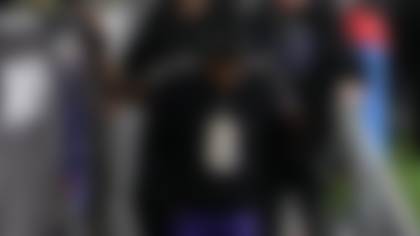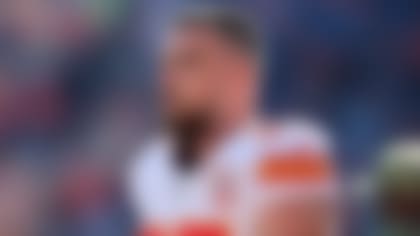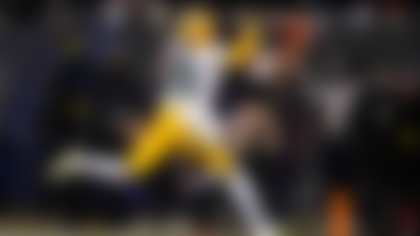The task of identifying the quarterbacks of the future isn't getting easier. There's an apple-and-oranges problem that's only getting worse.
It's difficult to project quarterbacks from the spread offenses so prevalent in college into the multiple offenses favored in the pros. Then there are other unknowable factors, like how quarterbacks at the next level will cope with the myriad necessary adjustments at the line of scrimmage, complex hot reads and outlets once the ball is snapped, a torrent of defensive schemes expertly disguised to prevent detection, and voice signals in the helmet receiver rather than hand signals on the sideline.
The spread gun offenses are an effective use of the talents available to the college game, but little of the attributes that it takes to run this type of system translates into the NFL. Vince Young completed 65 percent of his passes in his last year of college, with a 26-10 touchdown-to-interception ratio. JaMarcus Russell was an otherworldly 68 percent, with 28 TDs and only eight interceptions. But little of that was translatable to the pros, and both players struggled to attain even 50 percent completion percentages in the NFL.
Head coaches Mike Leach at Washington State, Urban Meyer at Ohio State and Steve Spurrier at South Carolina are three of the most successful and innovative coaches in college football. Their abilities, particularly in developing quarterbacks, is beyond dispute. The names of their quarterbacks litter the record books and have been awarded virtually every major honor that can be bestowed on a college QB. What they haven't done yet, however, is have one of these record-setting quarterbacks make it in the NFL with any sustained success. At least not at a level that established them above anything more than a backup or journeyman. Certainly Alex Smith, who played under Meyer at Utah, began showing signs that he could break this string in 2011, after six mostly nondescript seasons. The jury, for some, is still out on Meyer pupil Tim Tebow.
The spread-gun systems being run in the college game are a brilliant combination of high-percentage passes, strong running games, and to a large degree, the ability of the quarterback to generate yards rushing from the shotgun position. And that last piece is crucial, because that's more or less impossible to do on a regular basis in the NFL. Cam Newton was a one-year starter at Auburn, and threw 280 passes. As one NFL quarterback coach told me, "You can only take about 10 percent of the throws in the spread and apply them to the NFL. The spread is a pain in the ass to evaluate."
In the NFL, you don't want your quarterback taking any more hits than is absolutely necessary. One long-time GM said if you want to commit to this style of play with quarterbacks who can run, "You had better have two of them because the first one is going to get hurt." Take a look at Michael Vick, who came back to play superbly in the 2010 and 2011 seasons. But he also took a consistent pounding in both of those years, and had multiple games that he started but couldn't finish because of injuries.
Brooks: Bust potential
Bucky Brooks identifies five overrated prospects in the 2012 NFL Draft, including QB Ryan Tannehill and DT Dontari Poe. **More ...**
As much as defensive coordinators hate the pressure an athletic quarterback puts on them, they will tell you they fear the guy who can beat you from the pocket more. Steve Young is probably the last quarterback to challenge this theory, but even he admits, "It wasn't until I showed I could beat you from the pocket that I was able to capitalize on my athletic ability above and beyond the design of the offense."
The biggest concern a coach has is with the injury to his starting quarterback. This can happen easily enough just within the normal sequence of a game, let alone by exposing your franchise player to additional hits in the running game with designed runs by the quarterback. Tebow is proving an exception to this because he is built more like a linebacker than a quarterback. He has proven he can take repeated hits during the season, in part because he is a warrior in the weight room. But even this creates corollary problems: The lifting that Tebow does to make himself durable also prohibits him from developing the fluid action it takes to be a good passer.
Next to Newton, Vince Young may be the most imposing athlete ever to come out of college at the quarterback position. The Tennessee Titans took Young with the third pick of the 2006 NFL draft behind Mario Williams and Reggie Bush. The Titans knew they would have to commit to the unique style of play that Young represented. You didn't want to ignore the running skills that helped Texas win a national championship. At the same time, his strong arm lacked consistency and he was someone around whom you'd have to adapt an offensive system.
Darlington: The wild card
Is Ryan Tannehill a top-10 pick? Or a second-round talent? Jeff Darlington examines this draft's biggest conundrum. **More ...**
Young's NFL numbers are telling. His rookie completion percentage was typical of most first-year quarterbacks. The career 61-percent passer in college dropped to a predictable 51 percent in the NFL. The next year, 2007, he was able to increase his percentage to a solid 62 percent, but threw 17 interceptions to only nine TD passes. In the third year, he was injured and went into a funk that had friends and family fearing for his personal well-being. He was replaced by aging veteran Kerry Collins, and unable to regain the starting position after Collins took the Titans on an AFC-best 13-3 run in 2008. Collins was the absolute anti-Young at quarterback. The Titans had to completely change their system and style of play with Collins at quarterback compared to what they spent three years developing with Young.
That's another reason why mistakes on first-round quarterbacks can be so costly: It's not just that the guy you chose didn't work out. It's that the entire edifice you built around him then has to be torn down and rebuilt.
Much of the material above has been adapted from the book, "More Than A Game: The Glorious Present and Uncertain Future of the NFL," written by Brian Billick and Michael MacCambridge. Follow Brian Billick on Twitter @coachbillick




